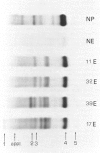Abstract
The kidney seems more sensitive to the chronic effect of cadmium than the lung. Only minor impairments of lung function (mild form of obstructive lung disease) were found after long-term occupational exposure (less than 20 yr) to moderate concentration of cadmium oxide dust and fume. This conclusion, cannot, however be extrapolated to acute or subacute inhalational exposure. The nephrotoxicity of cadmium consists in a tubular dysfunction characterized by an increased excretion of beta 2-microglobulin and giving rise to the classical tubular proteinuria and in a glomerular dysfunction evidenced by an increased excretion of high molecular weight proteins and increased levels of beta 2-microglobulin and creatinine in plasma and giving rise to a glomerular type proteinuria. These renal changes were mainly found in workers whose cadmium concentration at time of the survey exceeded 1 microgram Cd/100 ml in blood and 10 microgram Cd/g creatinine in urine. It should, however, be stressed that higher levels of Cd in blood and in urine are not necessarily associated with the presence of excessive proteinuria. In newly exposed workers, the Cd level in blood increases progressively to a plateau after several weeks. Cadmium level in urine fluctuates more. In workers exposed for several months to an airborne concentration exceeding 200 microgram/m3, Cd concentration in urine seems mainly influenced by recent exposure.
Full text
PDF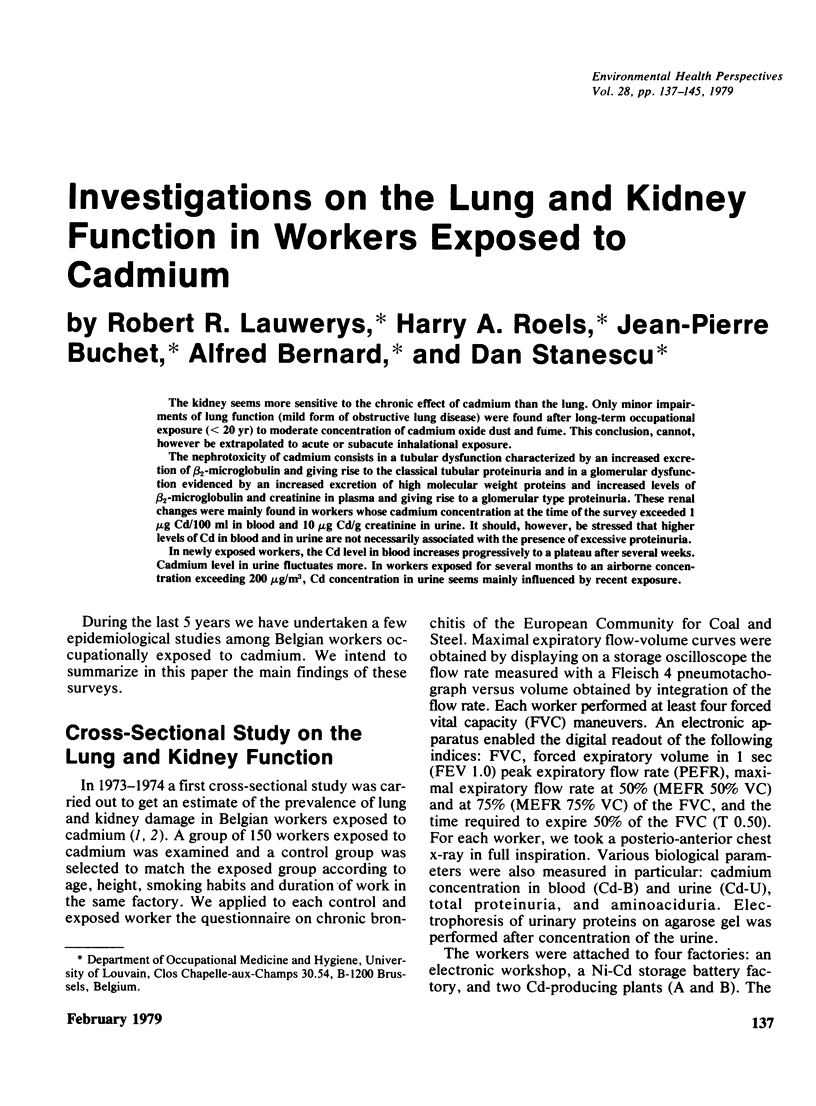
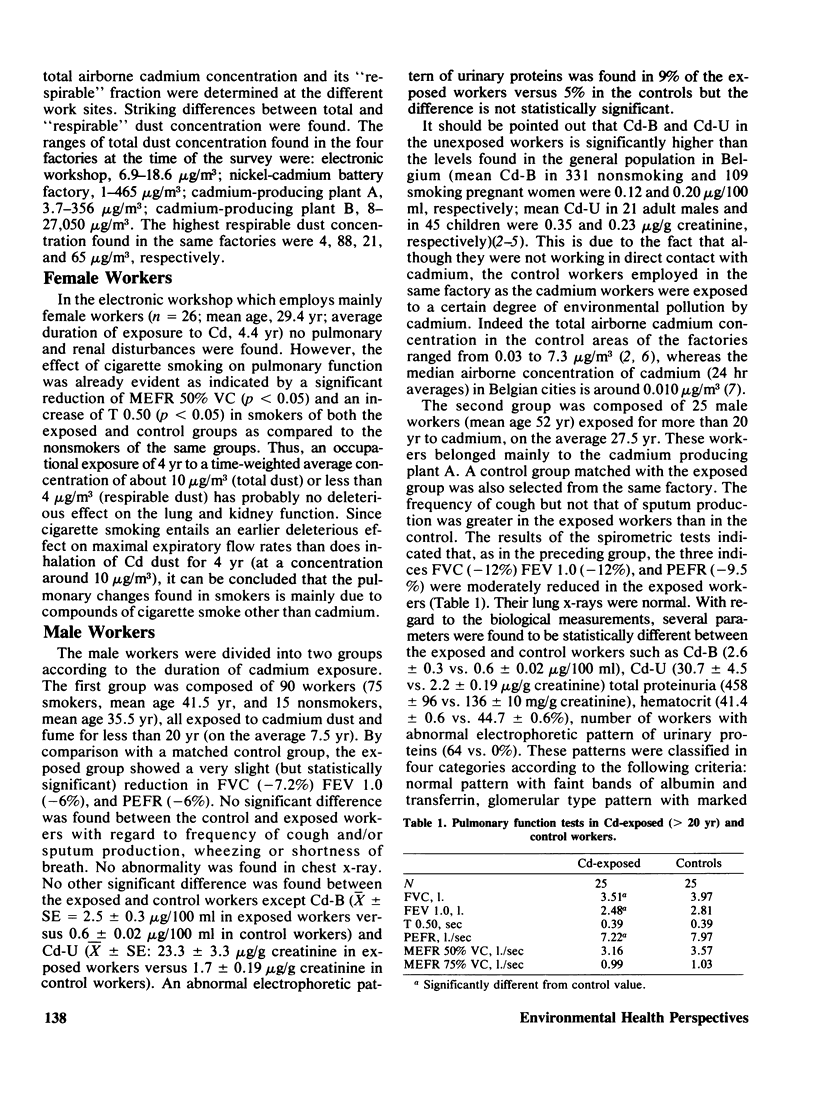
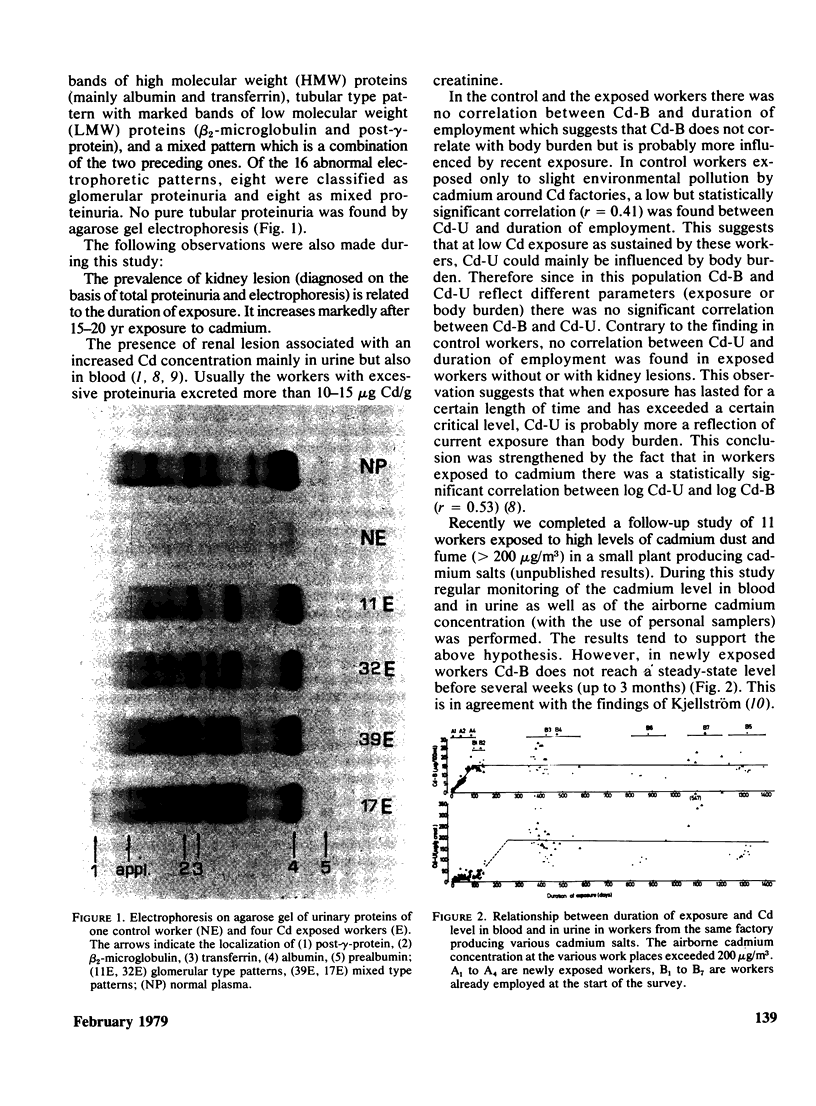

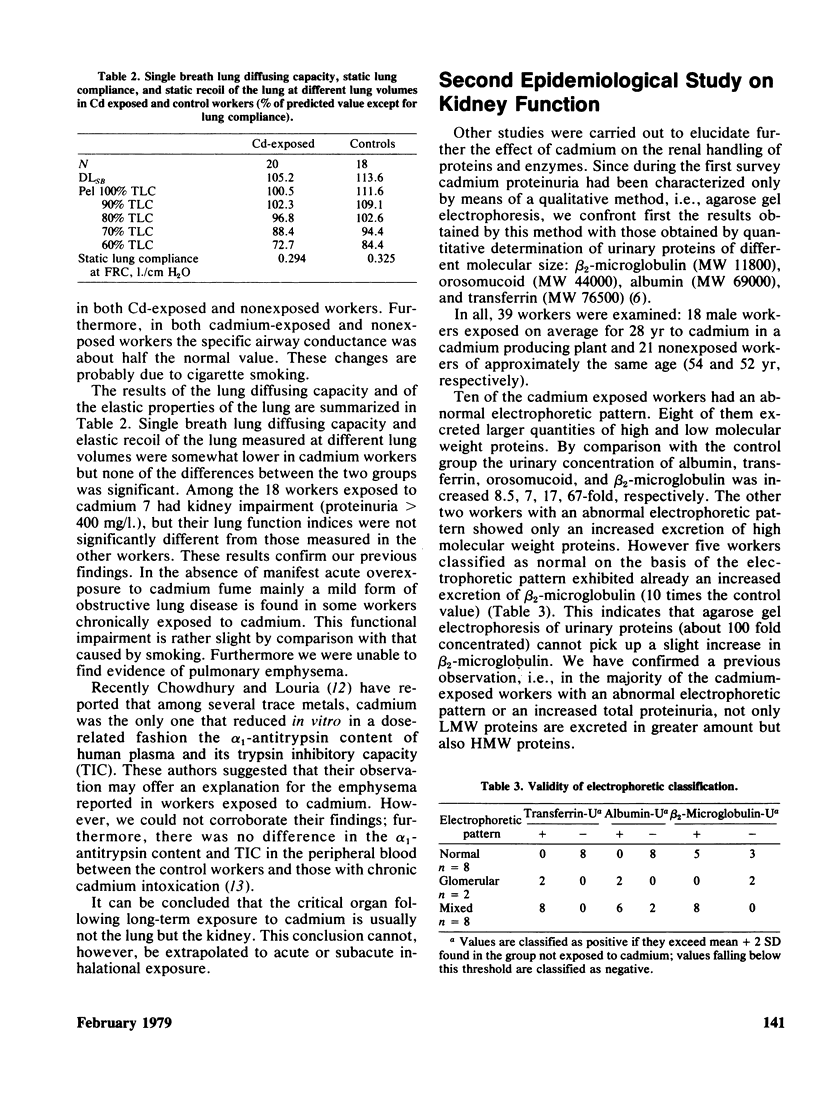
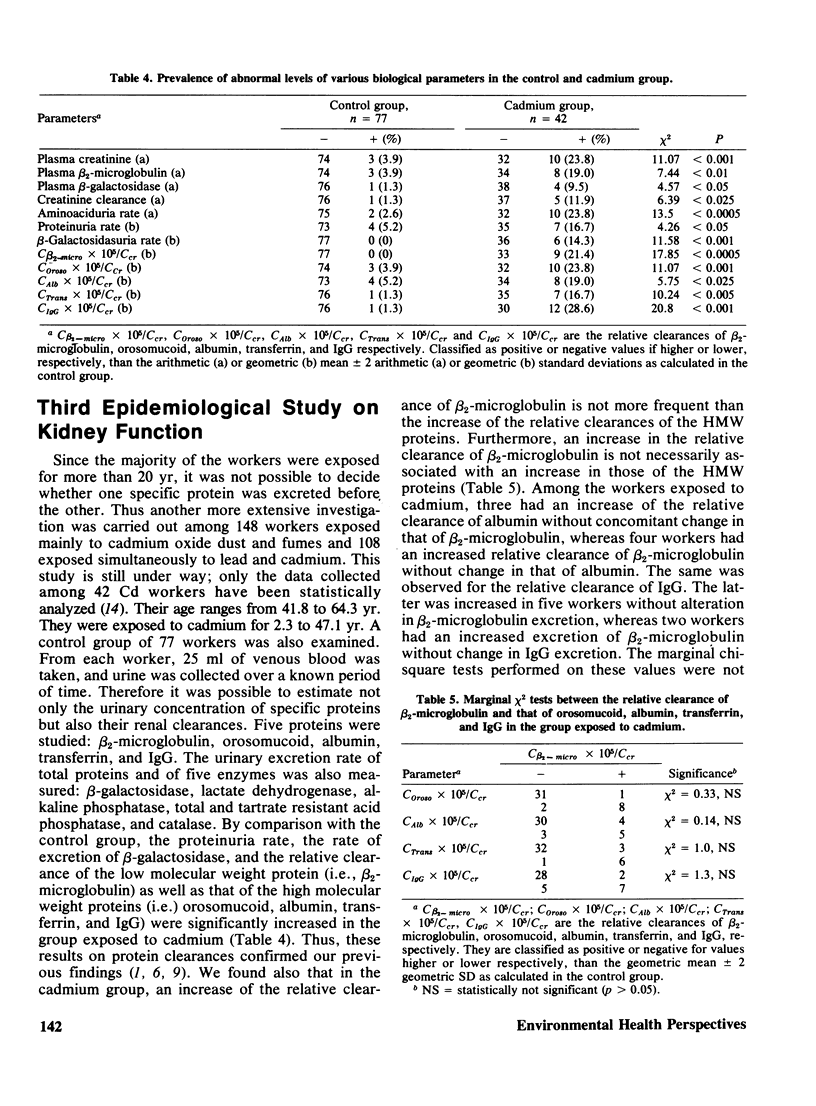
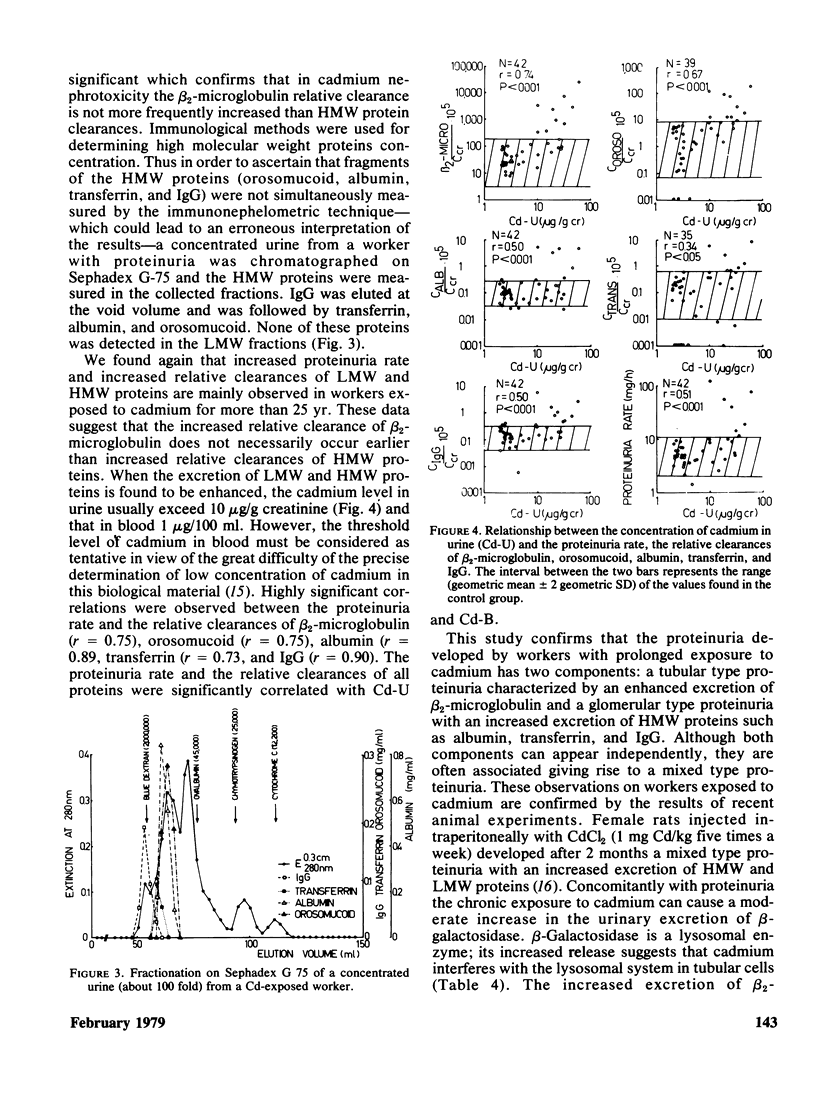
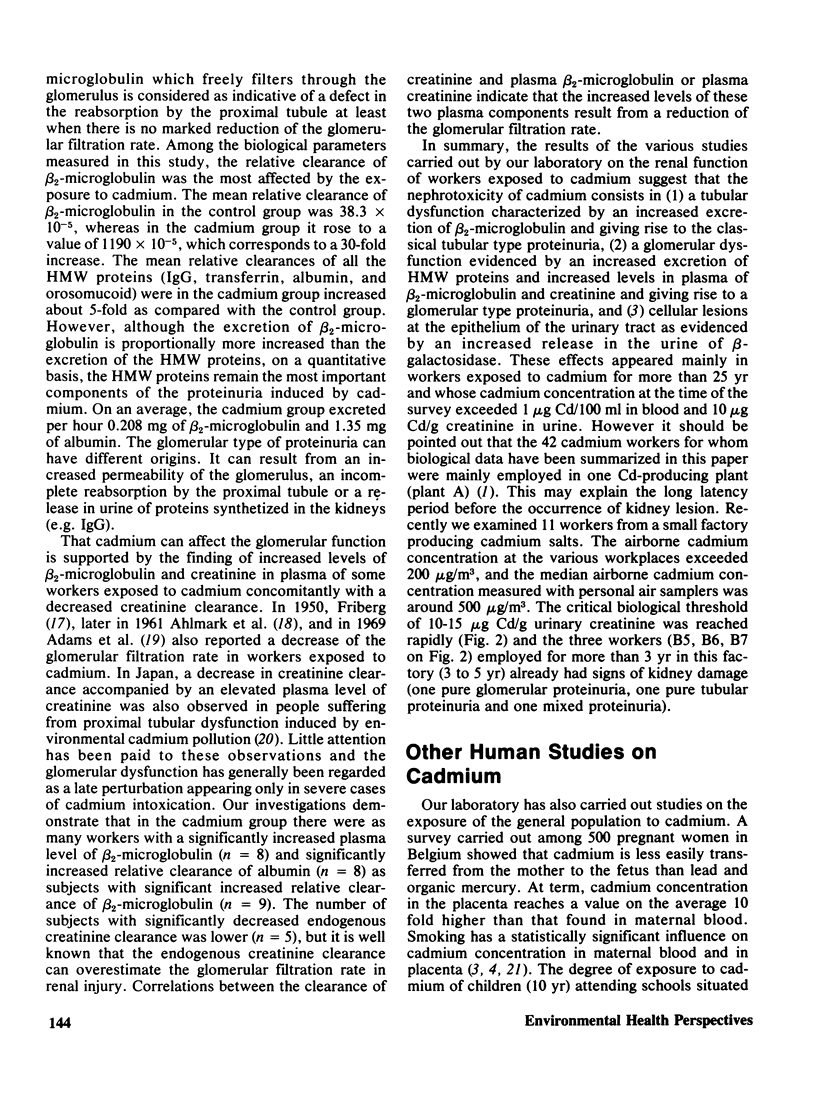
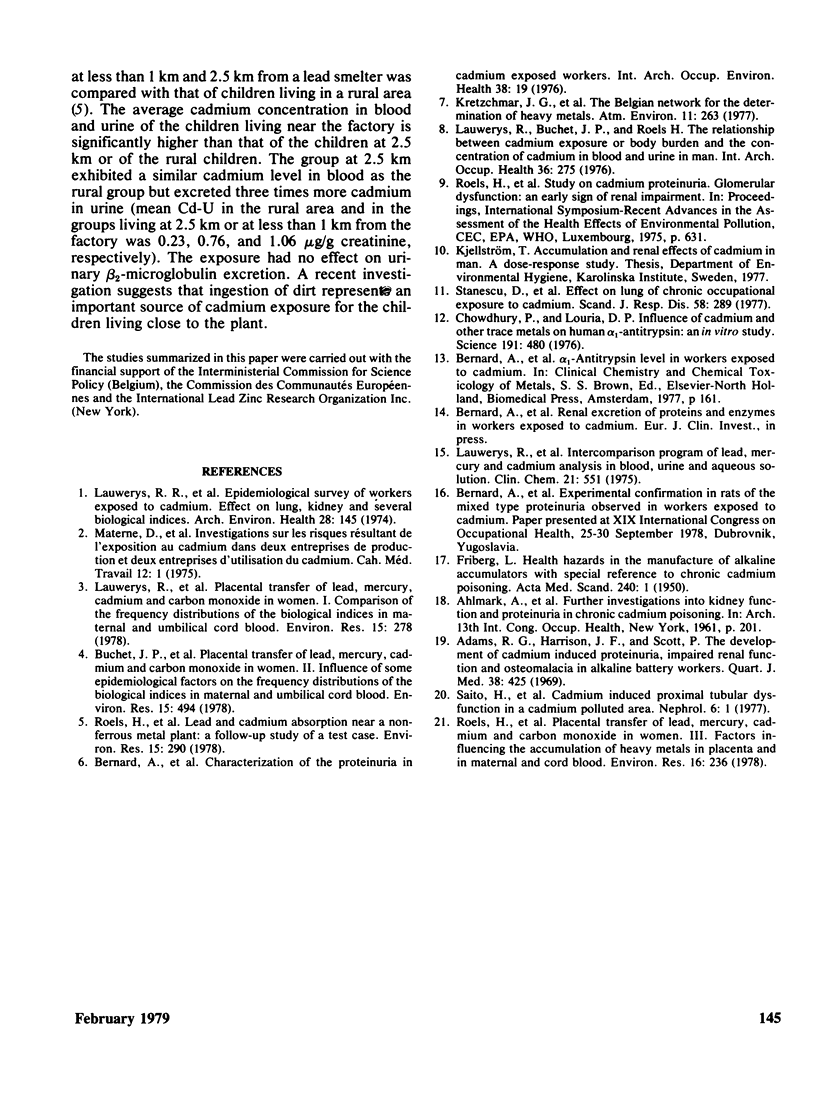
Images in this article
Selected References
These references are in PubMed. This may not be the complete list of references from this article.
- Adams R. G., Harrison J. F., Scott P. The development of cadmium-induced proteinuria, impaired renal function, and osteomalacia in alkaline battery workers. Q J Med. 1969 Oct;38(152):425–443. [PubMed] [Google Scholar]
- Buchet J. P., Roels H., Hubermont G., Lauwerys R. Placental transfer of lead, mercury, cadmium, and carbon monoxide in women. II. influence of some epidemiological factors on the frequency distributions of the biological indices in maternal and umbilical cord blood. Environ Res. 1978 Jun;15(3):494–503. doi: 10.1016/0013-9351(78)90128-7. [DOI] [PubMed] [Google Scholar]
- Chowdhury P., Louria D. B. Influence of cadmium and other trace metals on human alpha1-antitrypsin: an in vitro study. Science. 1976 Feb 6;191(4226):480–481. doi: 10.1126/science.1082168. [DOI] [PubMed] [Google Scholar]
- FRIBERG L. Health hazards in the manufacture of alkaline accumulators with special reference to chronic cadmium poisoning; a clinical and experimental study. Acta Med Scand Suppl. 1950;240:1–124. [PubMed] [Google Scholar]
- Lauwerys R. R., Buchet J. P., Roels H. A., Brouwers J., Stanescu D. Epidemiological survey of workers exposed to cadmium. Arch Environ Health. 1974 Mar;28(3):145–148. doi: 10.1080/00039896.1974.10666455. [DOI] [PubMed] [Google Scholar]
- Lauwerys R. R., Buchet J. P., Roels H. The relationship between cadmium exposure or body burden and the concentration of cadmium in blood and urine in man. Int Arch Occup Environ Health. 1976 Mar 9;36(4):275–285. doi: 10.1007/BF00409357. [DOI] [PubMed] [Google Scholar]
- Lauwerys R., Buchet J. P., Roels H., Berlin A., Smeets J. Intercomparison program of lead, mercury, and cadmium analysis in blood, urine, and aqueous solutions. Clin Chem. 1975 Apr;21(4):551–557. [PubMed] [Google Scholar]
- Lauwerys R., Buchet J. P., Roels H., Hubermont G. Placental transfer of lead, mercury, cadmium, and carbon monoxide in women. I. Comparison of the frequency distributions of the biological indices in maternal and umbilical cord blood. Environ Res. 1978 Apr;15(2):278–289. doi: 10.1016/0013-9351(78)90104-4. [DOI] [PubMed] [Google Scholar]
- Roels H. A., Buchet J. P., Lauwerys R., Bruaux P., Claeys-Thoreau F., Lafontaine A., van Overschelde J., Verduyn G. Lead and cadmium absorption among children near a nonferrous metal plant: a follow-up study of a test case. Environ Res. 1978 Apr;15(2):290–308. doi: 10.1016/0013-9351(78)90105-6. [DOI] [PubMed] [Google Scholar]
- Roels H., Hubermont G., Buchet J. P., Lauwerys R. Placental transfer of lead, mercury, cadmium, and carbon monoxide in women. III. Factors influencing the accumulation of heavy metals in the placenta and the relationship between metal concentration in the placenta and in maternal and cord blood. Environ Res. 1978 Jul;16(1-3):236–247. doi: 10.1016/0013-9351(78)90159-7. [DOI] [PubMed] [Google Scholar]
- Stănescu D., Veriter C., Frans A., Goncette L., Roels H., Lauwerys R., Brasseur L. Effects on lung of chronic occupational exposure to cadmium. Scand J Respir Dis. 1977 Dec;58(6):289–303. [PubMed] [Google Scholar]



